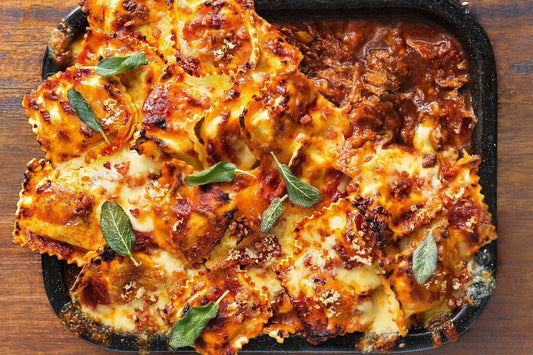Alfredo sauce is a beloved and indulgent component in Italian cuisine, known for its rich, creamy texture and luxurious flavor. Despite its popularity, Alfredo sauce is not actually cheese-based. Instead, it is primarily composed of butter, heavy cream, and Parmesan cheese. This article explores the origins of Alfredo sauce, its ingredients, variations, and popular dishes it complements.
Origins of Alfredo Sauce
Alfredo sauce, or "salsa Alfredo" in Italian, traces its origins to Rome, Italy, where it was created by restaurateur Alfredo di Lelio in the early 20th century. The original version consisted simply of butter and Parmesan cheese tossed with fettuccine pasta. This dish gained fame in the United States when celebrities visiting Alfredo's restaurant brought the recipe back home, leading to its widespread popularity.
Ingredients of Alfredo Sauce
The traditional Alfredo sauce recipe consists of the following key ingredients:
- Butter: Provides richness and flavor to the sauce.
- Heavy Cream: Adds creaminess and a smooth texture.
- Parmesan Cheese: Grated Parmesan cheese is essential for its salty and nutty flavor, which enhances the sauce's taste.
- Salt and Pepper: Seasonings to balance the flavors.
Some modern variations of Alfredo sauce may include garlic, nutmeg, or other herbs and spices to add depth and complexity to the dish. However, despite its creamy and cheesy characteristics, Alfredo sauce does not contain any traditional cheese beyond Parmesan.
Dishes Featuring Alfredo Sauce
Alfredo sauce is most commonly paired with fettuccine pasta, creating the famous dish known as Fettuccine Alfredo. However, its versatility allows it to be used in various other culinary creations, such as:
- Chicken Alfredo: Grilled or sautéed chicken served with Alfredo sauce over pasta.
- Seafood Alfredo: Shrimp, scallops, or other seafood combined with Alfredo sauce and pasta.
- Vegetable Alfredo: Alfredo sauce tossed with roasted or sautéed vegetables over pasta.
- Alfredo Pizza: A pizza topped with Alfredo sauce, chicken, spinach, and mozzarella cheese.
Pairing Alfredo Sauce
Alfredo sauce pairs well with a variety of sides and accompaniments, enhancing its creamy and savory flavors. Some popular choices include:
- Garlic Bread: Crusty bread with a garlic-infused buttery spread complements the richness of Alfredo sauce.
- Steamed Vegetables: Broccoli, asparagus, or peas provide a contrast in texture and color.
- Salads: A fresh green salad with a tangy vinaigrette offers a refreshing balance to the richness of Alfredo sauce.
Common Misconceptions
Despite its association with Parmesan cheese, Alfredo sauce is not classified as a cheese sauce. The sauce's primary components are butter, cream, and Parmesan, with cheese playing a specific flavor-enhancing role rather than dominating the sauce's composition.
Conclusion
Alfredo sauce remains a staple in Italian-inspired cuisine, celebrated for its creamy texture and distinct flavor profile. While often mistaken as a cheese sauce, its composition of butter, cream, and Parmesan cheese sets it apart as a unique and indulgent sauce that enhances a variety of dishes. Whether enjoyed traditionally with fettuccine or creatively incorporated into other recipes, Alfredo sauce continues to delight palates worldwide with its rich and comforting qualities.
In summary, Alfredo sauce is not purely cheese-based but rather a delightful blend of butter, cream, and Parmesan cheese, offering a luxurious addition to pasta dishes and beyond. Its versatility and rich flavor make it a favorite in both home kitchens and fine dining establishments, perpetuating its status as a timeless classic in the world of culinary delights.


